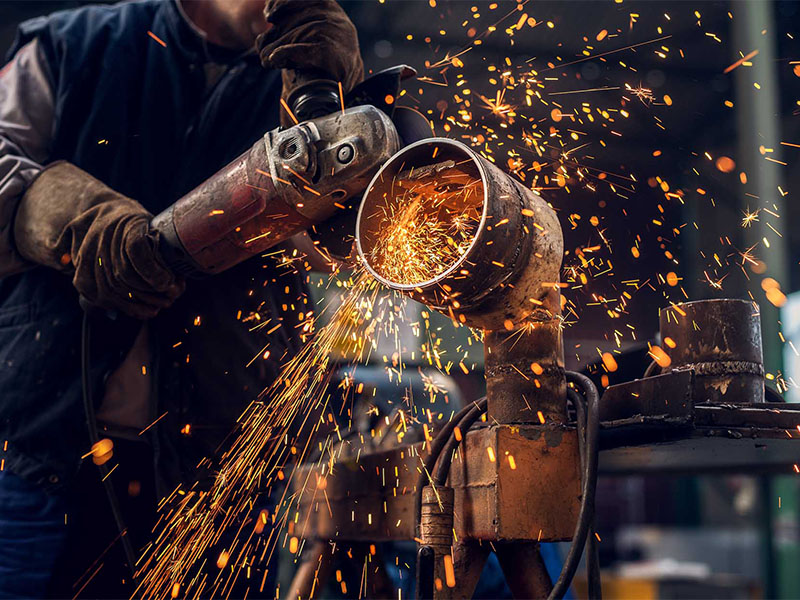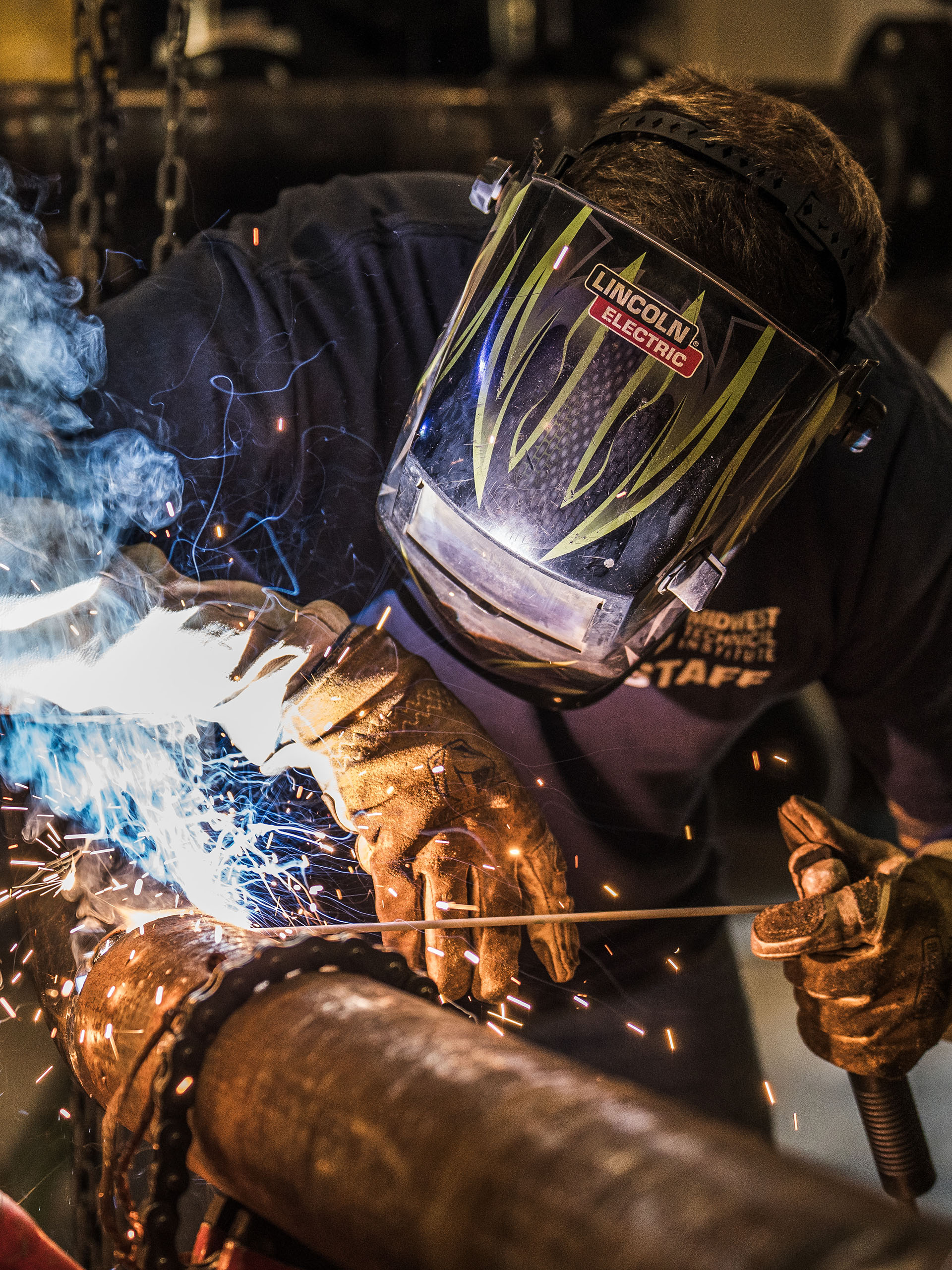All About Welding: Key Insights Into Techniques and Finest Practices for Success
Welding includes a selection of strategies, each matched for specific products and applications. Recognizing these techniques, such as GMAW, SMAW, and TIG, is important for attaining optimal outcomes. Furthermore, the best equipment and security practices can not be ignored. As preparation and troubleshooting play critical roles in the welding process, grasping these elements can greatly improve the top quality of the end product. What are the crucial variables that assure an effective weld?
Comprehending Different Welding Methods
Welding techniques incorporate a range of approaches, each suited to particular applications and materials. Amongst the most typical methods are Gas Metal Arc Welding (GMAW), Secured Metal Arc Welding (SMAW), and Tungsten Inert Gas Welding (TIG) GMAW, additionally understood as MIG welding, is prominent for its speed and adaptability, making it perfect for thin products. SMAW, or stick welding, is favored for its simpleness and efficiency in outside settings, especially with thicker metals. TIG welding offers precision and control, making it suitable for intricate work and non-ferrous steels (Welding). Each technique has its unique advantages and considerations, permitting welders to choose the most effective method based on the task's demands, material type, and preferred outcomes. Understanding these techniques is essential for successful welding
Crucial Welding Devices and Tools
While numerous welding techniques need specific abilities, the ideal equipment and tools are similarly important for accomplishing top quality results. Essential welding tools includes welding makers, which vary relying on the technique-- such as MIG, TIG, or stick welding. Safety equipment, including handwear covers, headgears, and aprons, warranties safety and comfort throughout the process. In enhancement, components and clamps aid secure products in position, making sure precision in welds. Consumables like welding poles, cable, and protecting gas are also vital components that influence the quality of the weld. Tools such as mills and cutters facilitate surface preparation and post-weld ending up, contributing to an expert outcome. Buying top quality tools eventually enhances the performance and efficiency of welding projects.
Safety Practices in Welding
Appropriate safety and security methods are vital in the welding sector to protect workers from possible dangers. Welders must wear proper individual safety equipment (PPE), including safety helmets with appropriate shading, handwear covers, and flame-resistant clothes. Appropriate ventilation is crucial to decrease exposure to damaging fumes and gases created during the welding process. In addition, workers should be trained in the appropriate handling of welding devices to avoid mishaps. Fire security measures, such as keeping flammable products away from the welding area and having fire extinguishers readily available, are necessary. Routine examinations of devices and workspaces can help determine prospective hazards prior to they result in crashes. By sticking to these safety and security methods, welders can create a much safer working setting and decrease threats connected with their trade.
Readying Materials for Welding
Preparing materials for welding is an essential action that significantly influences the high quality and integrity of the end product (Montana Mobile Welding and Repair Belgrade). Appropriate prep work includes cleansing the surface areas to eliminate impurities such as oil, dust, and corrosion, which can compromise the weld. Techniques such as grinding, sanding, or utilizing solvents are typically employed to attain a tidy surface. Furthermore, guaranteeing that the products mesh snugly is necessary; spaces can result in weak welds. It's also important to take into account the placement and positioning of the components, as this will influence the convenience of welding and the last result. Lastly, selecting the proper filler product and making certain compatibility with the base metals is essential for accomplishing strong, durable welds
Tips for Getting High-Quality Welds
Achieving high-quality welds needs interest to detail and adherence to finest techniques throughout the welding procedure. Proper joint prep work is important, making certain surfaces are clean and complimentary from pollutants. Choosing the ideal filler product and welding technique based on the base steels is vital for ideal bonding. Maintaining regular traveling speed and angle while welding can protect against problems and advertise uniformity. Additionally, managing heat input is crucial; excessive heat can cause bending and weakened joints. Frequently checking the welds during the process permits prompt adjustments if necessary. Finally, employing suitable post-weld therapies, such as cleansing and stress alleviation, can improve the longevity and honesty of the weld, ultimately guaranteeing a successful outcome.
Repairing Typical Welding Issues
Welding usually provides obstacles that can impact the quality and integrity of the end product. Typical problems such as porosity, inconsistent weld grains, and overheating can develop, each requiring details fixing techniques. Comprehending these troubles is essential for welders to boost their skills and accomplish perfect outcomes.
Porosity Issues Explained
Porosity can often be neglected, it stays an important concern in welding that can compromise the integrity of a finished kelly welding product. Porosity describes the existence of small gas pockets within the weld grain, which can compromise the joint and lead to early failure. This problem generally emerges from contaminants, wetness, or incorrect securing gas insurance coverage during the welding process. To reduce porosity, welders need to verify that the base materials are tidy and completely dry, use appropriate securing gases, and maintain constant welding specifications. Consistently examining the equipment and setting can likewise help determine possible problems prior to they show up in the weld. Dealing with porosity properly is important for accomplishing strong, sturdy welds that fulfill high quality requirements.

Inconsistent Weld Beads
Irregular weld beads can significantly impact the high quality and toughness of an ended up product. Various variables contribute to this issue, consisting of inappropriate traveling speed, inaccurate amperage setups, and inconsistent electrode angles. When the welder moves as well promptly, a bead might appear narrow and lack penetration, while relocating too slowly can create extreme buildup. Additionally, utilizing the incorrect amperage can result in either undercutting or extreme spatter, both of which compromise weld honesty. The welder's method, such as irregular torch motion, can additionally cause uneven grain appearance. To mitigate these problems, welders should focus on keeping consistent, controlled motions and guaranteeing correct equipment setups to attain harmony in their welds. Consistency is crucial to accomplishing trusted and solid welds.
Getting Too Hot and Warping Issues
Extreme warmth throughout the welding his explanation process can result in substantial overheating and deforming issues, influencing the structural honesty of the workpiece. These problems commonly show up as distortion, which can jeopardize placement and fit-up, making additional assembly testing. Aspects adding to overheating consist of the option of welding parameters, such as voltage and travel rate, in addition to the type of product being welded. To reduce these problems, welders should keep constant travel rate and proper warmth input while checking the work surface temperature level. In addition, pre-heating or post-weld heat treatment can help alleviate anxieties triggered by fast air conditioning - Montana Mobile Welding and Repair Belgrade Welding. Normal evaluation and adherence to best methods are vital in preventing overheating and making sure the durability and reliability of bonded structures
Frequently Asked Concerns
What Are the Career Opportunities in the Welding Sector?
The welding industry provides varied career chances, including settings as welders, engineers, examiners, and teachers. Experts can operate in production, building, aerospace, and vehicle sectors, gaining from strong need and competitive salaries in various functions.
Exactly How Can I Enhance My Welding Rate Without Sacrificing High Quality?
To boost welding rate without compromising quality, one must exercise efficient methods, preserve devices, enhance setups, and boost hand-eye coordination. Regular training and looking for comments the original source can likewise substantially add to attaining quicker, top quality welds.
What Certifications Are Available for Welders?
Various accreditations exist for welders, including those from the American Welding Culture (AWS), the National Facility for Building And Construction Education And Learning and Research Study (NCCER), and various industry-specific companies. These qualifications boost employability and show ability proficiency.
How Does Welding Affect the Characteristics of Metals?
Welding influences the buildings of steels by modifying their microstructure, which can result in changes in ductility, hardness, and toughness. Warmth input and air conditioning rates throughout the procedure considerably affect these material attributes.
Can I Weld Dissimilar Metals With Each Other?
